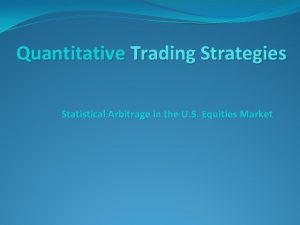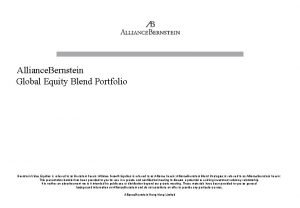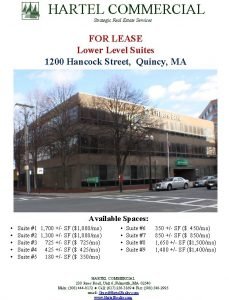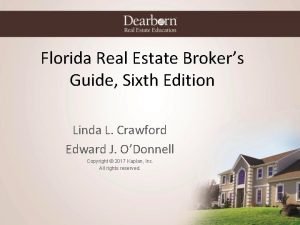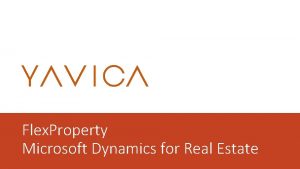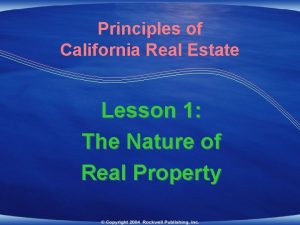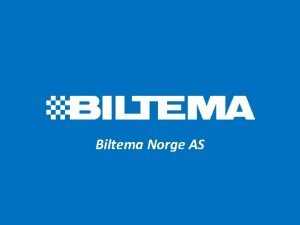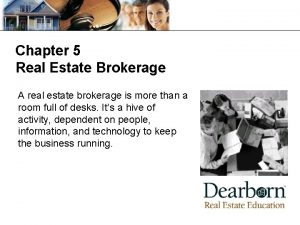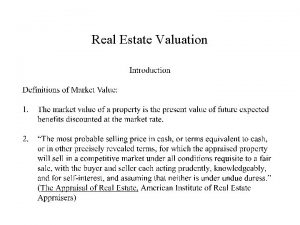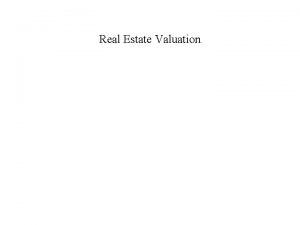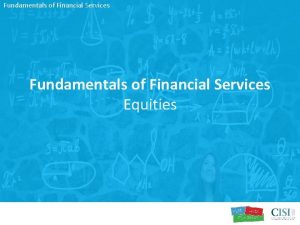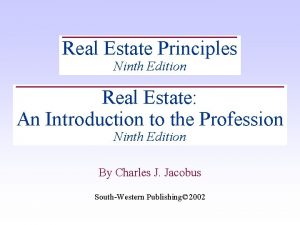Real Estate Equities Real Estate or Equities Schtz













- Slides: 13

Real Estate Equities – Real Estate or Equities? Schätz, Alexander and Sebastian, Steffen European Real Estate Society Conference 2009 in Stockholm June 24 -27, 2009

1. Direct Real Estate - Portfolio Diversification § § § Real estate = alternative investment Real estate = real asset Long-term investment horizons Low correlations and a distinctive risk/return structure Earlier studies found favourable characteristics: o High stability of value o Low volatilities o Hedge against inflation - „Disadvantages“ of Direct Real Estate Investments § Illiquidity: Market volume, market spectrum § Low information efficiency, insufficient market transparency § High information costs, high transaction costs, reduced profit margins Seite 2

1. Listed Real Estate - Ongoing expansion of securitized real estate - Consequences: - Additional drivers affect the performance and risk/return structure - Asset´s performance is dependent on current economic news, incorrect analyst expectations and valuations, - Risk: Irrational behaviour on stock markets Listed real estate companies are faced with the risk that market values are predominantly driven by developments on general stock markets Seite 3

1. General Stock Market Risk and Portfolio Allocation - Limited benefits of listed real estate in terms of portfolio diversification - Risk of an involuntarily increased portfolio risk - Risk of a portfolio allocation that is riskier than intended Seite 4

2. Objectives Real Estate Equities: Real Estate or Equities? - Can listed real estate still be characterised as real estate investments in their primary meaning? - Do the features as an alternative investment still persist despite listing on stock exchanges? - Do real estate investments still provide potential for diversifying the investors´ portfolios? - Still no incontrovertible evidence up to now! Seite 5

3. Literature: “Features of Real Estate Assets“ Author (Year) Method Ling and Naranjo (1999) Multifactor Asset Pricing Model (MAP) Real Estate Economics Findings • Exchange-traded real estate and equity markets are integrated • Degree of integration increased during the 1990 s Glascock et al. (2000) Journal of Real Estate Finance and Economics Bond et al. (2003) Real Estate Economics Hamelink and Hoesli (2004) Real Estate Economics Westerheide (2006) ZEW Working Paper Cointegration • REITs are rather comparable with stocks than bonds CAPM • Substantial variation in mean returns and standard deviations across the examined countries Cross-sectional regressions Engle Granger Test, ECM, Johansen Procedure Morawski et al. (2008) Financial Markets and Portfolio Management Seite 6 Johansen Procedure • Dominant role of country factors • Relevance of size factors and value/growth factors • In the long run: Real estate equities reflect the direct real estate; (weak) hedge against inflation • In the short run: Real estate equities follow the general stock market • In the long run: Real estate equities reflect the direct real estate

3. Literature: “Real Estate and Macroeconomics“ Author (Year) Liu et al. (1997) Real Estate Economics Liang and Mc. Intosh (1998) Journal of Real Estate Portfolio Management Quan and Titman (1999) Real Estate Economics Sing (2004) Journal of Property Research Hoesli et al. (2008) Journal of Real Estate Finance and Economics Seite 7 Method Findings According to Fama, Schwert (1977) as well as Geske, Roll (1983) • Real estate do not represent a better hedge against inflation compared to common stocks Regressions and Rolling Correlations • Positive linkage between employment growth of metropolitan areas and their property markets Regressions • significant relation between real estate prices and stock prices • inflation-hedging characteristics in the long run Multifactor Asset Pricing Models (MAP) Vector error correction approach • Macroeconomic risk factors are priced different in securitized and direct real estate markets • positive linkage between commercial real estate and anticipated inflation • Negative linkage due to inflation shocks

4. Methodology: Cointegration and VECM Cointegration Tests Vector Error Correction Model (VECM) 1. Trace-Test H 0 : There at most r positive eigenvalues H 1 : There are more than r positive eigenvalues ∆Y (n x 1) vector of the first differences of stochastic variables Гi (n x n) matrices representing the short-term dynamics ß (n x r) matrix representing the r cointegrating vectors α (n x r) matrix containing the loading parameter μ (n x 1) vector of constants εt error term p λTrace = - T ∑ ln(1 -λi) r+1 2. Maximum Eigenvalue H 0: There are exactly r positive eigenvalues H 1: There are exactly r+1 positive eigenvalues λmax = - T ln(1 -λr+1) Seite 8

5. Empirical Results: VECM (β – vectors) Seite 9

5. Empirical Results: VECM (β – vectors) Seite 10

5. Empirical Results: Variance-Decomposition United States Seite 11

5. Empirical Results: Variance-Decomposition United Kingdom Seite 12

Thank you for your attention! Seite 13
 Market value of equity
Market value of equity Statistical arbitrage in the us equities market
Statistical arbitrage in the us equities market Alliance
Alliance Southpoint village apartments fishers indiana
Southpoint village apartments fishers indiana Hartel commercial real estate
Hartel commercial real estate Florida real estate broker's guide 6th edition
Florida real estate broker's guide 6th edition 60 second elevator pitch
60 second elevator pitch Microsoft dynamics real estate
Microsoft dynamics real estate Emblements real estate
Emblements real estate Osbe meaning real estate
Osbe meaning real estate Biltema radio reklame
Biltema radio reklame Real estate development proposal presentation
Real estate development proposal presentation Easton v strassburger
Easton v strassburger Group boycotting in real estate
Group boycotting in real estate

